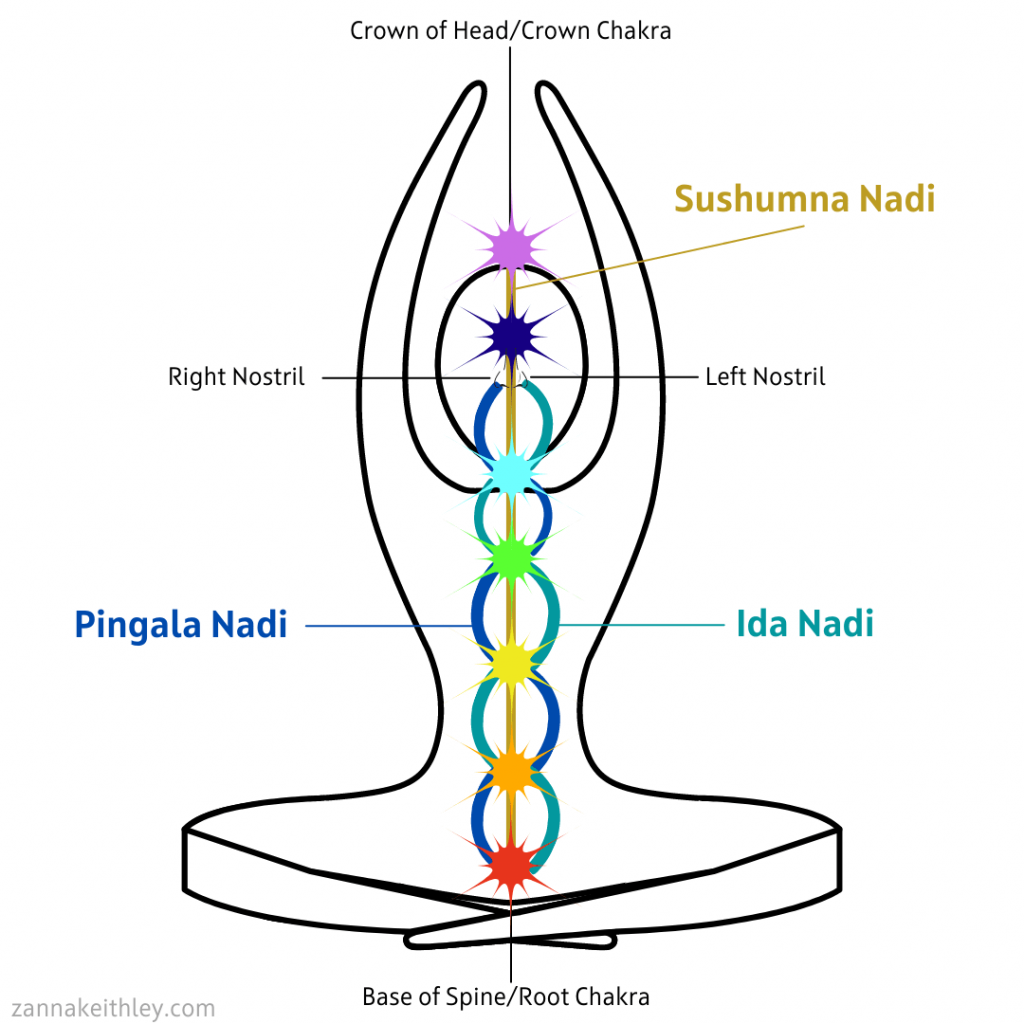
What Are Nadis? Nadis and Chakra Healing, Yoga & More
What are nadis? In this post, learn all about nadis, the energy channels through which your life force flows. Discover the relationship between nadis and chakras, and learn how to keep your nadis clear and open so you can align with your highest self.

Your Energy Centers
It’s likely if you have a spiritual practice, meditate, and/or practice yoga, you’ve heard of chakras, your body’s energy centers through which your life force (or prana) flows. Chakra is a Sanskrit word for “wheel” or “disk” and is commonly defined as a wheel of energy in your body.
Your body has seven main chakras: Root, Sacral, Solar Plexus, Heart, Throat, Third Eye, and Crown. Each chakra has associated attributes and plays a distinct role in your mental, emotional, physical, and spiritual health and well-being. For instance, your root chakra (also known as your first chakra) is your body’s energy center for stability, security, groundedness, safety, and strength. As the lowest energy center in your body, it acts as your foundation. When your root chakra is open and balanced, you feel stable and secure. Without a balanced root chakra and stable foundation, it’s likely that your other energy centers will also become imbalanced.
I won’t go into too much detail about chakras today, but if you’re interested in learning more, I’ve included links to some of my chakra blog posts below. I also encourage you to check out my Chakra Healing Bundle, which includes a Chakra Healing eBook, Chakra Healing Workbook, and 8-Week Chakra Healing Guide.
What I do want you to know about chakras today is this: even though each of your chakras plays a distinct role in your overall well-being, all of your chakras work together as one whole system. When one becomes imbalanced, it’s likely to affect the others. You can compare this to the physical organs inside your body: when one organ isn’t functioning correctly, this may negatively affect other parts of your body. All of your chakras play a significant role in keeping you in optimum health.
While you often only hear about the seven main chakras, your body actually has 114 chakras, and some people believe there are even more. For instance, you have chakras in your hands, shoulders, and tongue, and there are even two chakras that reside outside your body.
Finally, the last thing I want to note about chakras is that unlike your organs, your chakras aren’t an actual physical thing you can see in an x-ray. Rather, you experience them through feelings, sensations, and your own inner knowing.
- Start here to learn more about chakras: Chakra Colors and Meanings: A Beginner’s Guide and A Beginner’s Guide to Understanding and Unblocking Your Chakras

What Are Nadis?
So what are nadis, and how do they play a role in your chakra system?
Nadis are the energy channels through which your life force flows; the word nadi is a Sanskrit word meaning “tube”, “channel”, or “flow.” (I’ve also seen it translated to “a flowing river.”) The points at which these nadis intersect are your chakras. You can think of it like a town with numerous roads and a building at each intersection. Your nadis are the roads, and your chakras are the buildings at each intersection. Cars, or your energy, are traveling up and down these roads to the buildings.
When the system is working perfectly, these buildings are open 24/7, and the cars are continually moving in and out of them.
This is the same as your energy centers: ideally, your chakras are always open so that energy can flow to and through them.
While the buildings and chakras get all the attention, they only work when the system as a whole works: roads need to be made for cars to travel on, and nadis are needed for energy to travel through.
Now, I do want to note that my road analogy isn’t a perfect comparison. Nadis are energy channels through which your life force flows, but they’are also intrinsically more than just a road to get to a chakra. If you’ve ever had an out-of-body experience, experienced an altered state of consciousness (often through meditation), or had a light-at-the-end-of-the-tunnel experience, it may be attributed to energy escaping through the body through your nadis. Nadis are also correlated to spiritual development and what you might consider “spiritual powers” (such as sensing or seeing auras).
Many estimate that you have between 21,000 to 72,000 nadis in your body, though some people believe there could be hundreds of thousands or even millions of nadis within each of us.
Just like you have over a hundred chakras but seven have been singled out as your main chakras, you have thousands of nadis, but three are believed to be most important: the Sushumna Nadi, the Ida Nadi, and the Pingala Nadi.
Sushumna Nadi
The Sushumna Nadi is believed to be the most important of all the thousands of nadis that exist within your body. Running up the base of your spine to the crown of your head, this energy channel runs through all of your main chakras and is believed to be connected to your highest self. When it’s unblocked and energy can flow freely through it, you are aligned with your true, highest, most authentic self. You also become open to experiencing a profound spiritual awakening, feel a sense of deep inner wisdom, and know deep inner peace and true harmony within your mind, body, and spirit.
Ida Nadi
Your Ida Nadi is associated with your feminine energy and starts at the base of your spine (at your root chakra). It then runs through your core to your left nostril. It is associated with right-brain dominance and what you might describe as softer, darker energy. It is also associated with the moon.
Pingala Nadi
Your Pingala Nadi is associated with your masculine energy. It starts at the base of your spine (at your root chakra) and runs through your core to your right nostril. (The Ida Nadi and the Pingala Nadi flow upwards criss-crossing each other at your chakra points.) It’s associated with left-brain dominance and what you might describe as stronger, lighter energy. As the Ida Nadi is associated with the moon, the Pingala Nadi is associated with the sun.
Unblocking Your Nadis
A lot of attention is paid to opening, healing, and unblocking your chakras, but it’s just as important that your nadis remain open and unblocked. Again, to return to the road analogy, in order for cars to get to the intersections where the buildings are located, they need to be able to travel freely up and down the roads. If a road is blocked, this not only inhibits the cars to travel through that road, but it affects neighboring roads as well.
If any of your energy channels become blocked, energy can no longer pass freely through it, inhibiting your energy from reaching your chakras. This can have negative effects on your physical, mental, emotional, and spiritual self.
So how do you ensure your nadis remain clear for energy to easily pass through? Here are a few methods:
Alternate Nostril Breathing
Have you ever noticed that you may breathe easier through one nostril than the other? If not, you can try a quick test right now. Gently press any of the fingers on your right hand against the right side of your nose, closing the right nostril. Place the fingers of your left hand below your left nostril. Exhale through your nose, noticing whether you can feel the warm air of your exhale against your left fingers. Then try this with your right nostril.
If you’re able to feel air moving easily through both nostrils, that’s a good sign! If not, one of your nadis may be experiencing blockages. Alternate nostril breathing, also known as Nadi Shodhana, is one method to clear your energy channels so energy can flow freely through them. There are several ways to do this, so I’ll explain the method I use below, then link to some articles that discuss a few other methods.
- You can start in your preferred meditation position, sitting cross-legged on the floor or on a chair with your feet planted on the ground. (Just not laying down.) Keep your spine straight and your head lifted.
- Lift your right hand. With this practice, you’re going to use three fingers: pinky, ring, and thumb. You can take your index and middle finger and fold them against your palm, so only the pinky, ring finger, and thumb are sticking up.
- You may want to take a few deep breaths first and spend a minute or two grounding yourself to this present moment. Take as much time as you need.
- With the right thumb of the right hand, close your right nostril. Inhale deeply through your left nostril.
- At the top of your inhale, pause. Lift your thumb from your right nostril and close your left nostril using your pinky and ring finger. Exhale fully through your right nostril.
- Then inhale through your right nostril, exhale through your left nostril.
- Inhale through your left nostril, exhale through your right nostril.
- Continue this pattern for several minutes, pausing at the top of each inhale and exhale. You can continue this practice for as long as you’d like.
Since the Ida Nadi and Pingala Nadi both start at the base of your spine, criss-crossing each other and running through your left and right nostrils, respectively, it’s important to really follow your breath as you practice alternate nostril breathing. When your right nostril is closed, follow your breath from the base of your spine to your left nostril; when your left nostril is closed, follow your breath from the base of your spine to your right nostril.
Here are a few articles that discuss alternate nostril breathing and various methods for completing this practice:
- Chopra: Nadi Shodhana: How to Practice Alternate Nostril Breathing
- Yoga Journal: Channel-Cleaning Breath
- The Art of Living: Alternate Nostril Breathing Technique (Nadi Shodhan Pranayama)
Hatha Yoga
Hatha yoga is the type of yoga the general public likely thinks of when they hear the word “yoga”: yoga that pairs poses, or asanas, with breathing techniques, or pranayama. When you’re looking at a course catalog for your local yoga studio, you can typically be certain that anything titled Hatha Yoga will move a little slower and may include breathing exercises, static postures, and possibly even a meditation to start or end the class.
Ha is translated to mean sun, and tha is translated to mean moon. If you remember from the bulletpoints on the Ida Nadi and Pingala Nadi above, the Ida Nadi is associated with the moon, and the Pingala Nadi is associated with the sun. The practice of Hatha yoga aims to balance these two energies – moon and sun, feminine and masculine – to bring the Ida Nadi and Pingala Nadi into equilibrium. (Note: The literal meaning of the word “hatha” means “force,” “effort,” or “exertion.”)
Positive Affirmations and Intentions
Have you ever heard the phrase, “Where your attention goes, energy flows”? Your mindset plays a powerful role in the harmony of your mind, body, and spirit. For instance, if you easily become overwhelmed and have thoughts that correlate with stress and anxiety, this negative energy will manifest in physical, emotional, and spiritual turmoil. When you’re able to cultivate a mindset of inner peace and tranquility, your energy is able to flow more freely throughout your body. Note that this isn’t a call to engage in toxic positivity, which is just as dangerous as stress and anxiety. You should always honor all of your feelings, even those you deem as negative. But you don’t have to stay with those negative thoughts. As Paulo Coelho wrote, “You drown not by falling into a river, but by staying submerged in it.” Use positive affirmations that truly resonate with you, and set the intention each day to remain grounded, stable, and peaceful, no matter what occurs in your external world.
Gentle Movement
If the weather allows it, go on a calming walk outside somewhere you feel safe and breathe in the fresh air. Engage in gentle movement that feels good to you and doesn’t put too much stress on your body. If you’re able to jog without breathing too heavily, you can do this as well. But don’t feel limited to these options. For instance, I’ve exercised using a weighted hula hoop and found this to be extremely effective in stimulating the movement of energy throughout my body. (Plus, it’s fun!) Gentle movement stimulates the flow of energy within the body in a way that can be both nurturing and calming.
Final Thoughts
While chakras rightfully get a lot of attention when it comes to the total well-being of your mind, body, and spirit, it’s important not to forget the role your nadis play in your overall health. Your nadis also play an essential role in connecting to your highest self and experiencing spiritual growth. When these energy channels are open and clear, you are able to find alignment with your true self and maintain optimum health: spiritually, physically, mentally, and emotionally.
For more chakra resources, positive affirmations, self-love tools, manifestation inspiration, and more, be sure to follow me on Pinterest and Instagram!


Zanna Keithley is an author, poet, and social media content creator who writes short prose dedicated to inspiring readers to follow their dreams, trust their intuition, and create beautiful and fulfilling lives. You can find her original writing on Instagram @zannakeithley.







One Comment
HolisticSoulHealings.com
I tried yoga for chakra balance after discovering this while checking out yoga videos on youtube. And I have to say that I absolutely loved it. It really made me feel good and I felt a sense of balance – mentally, physically, emotionally and spiritually. 🙂